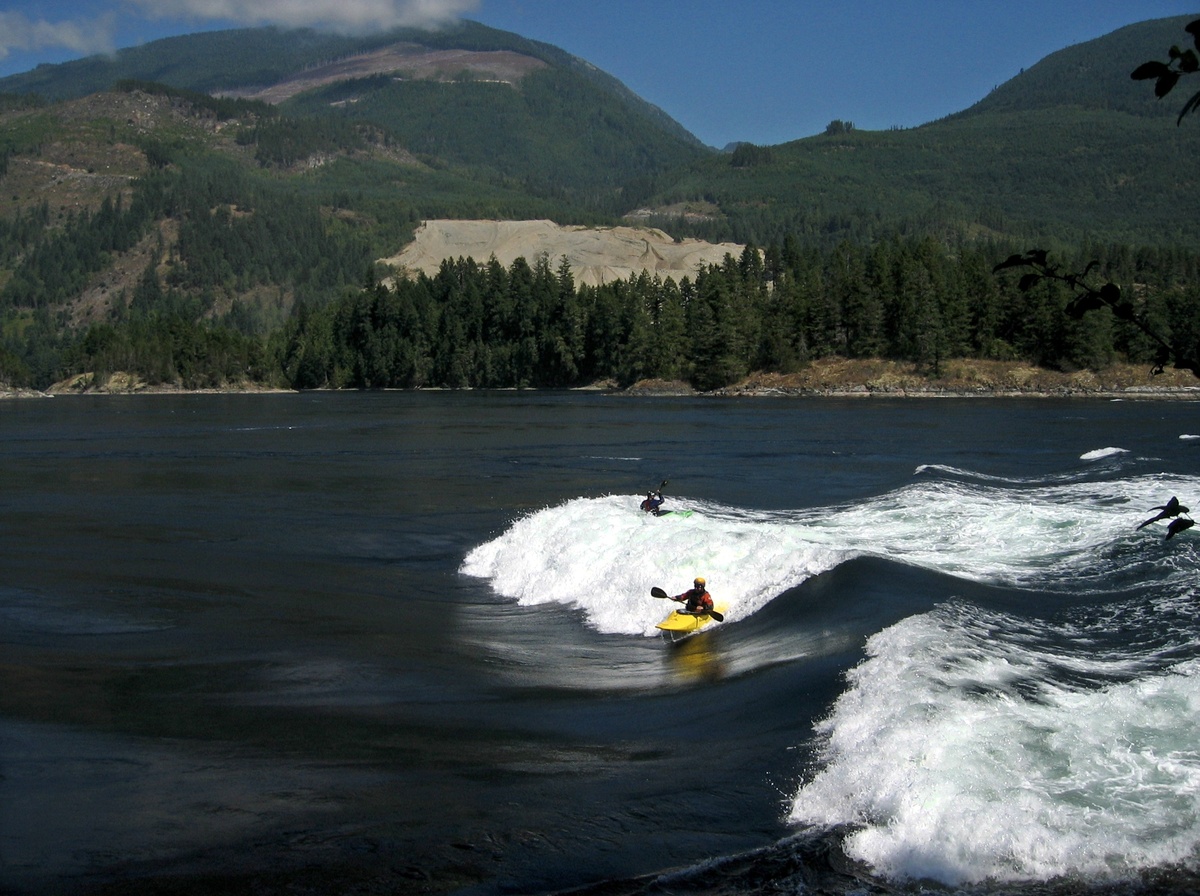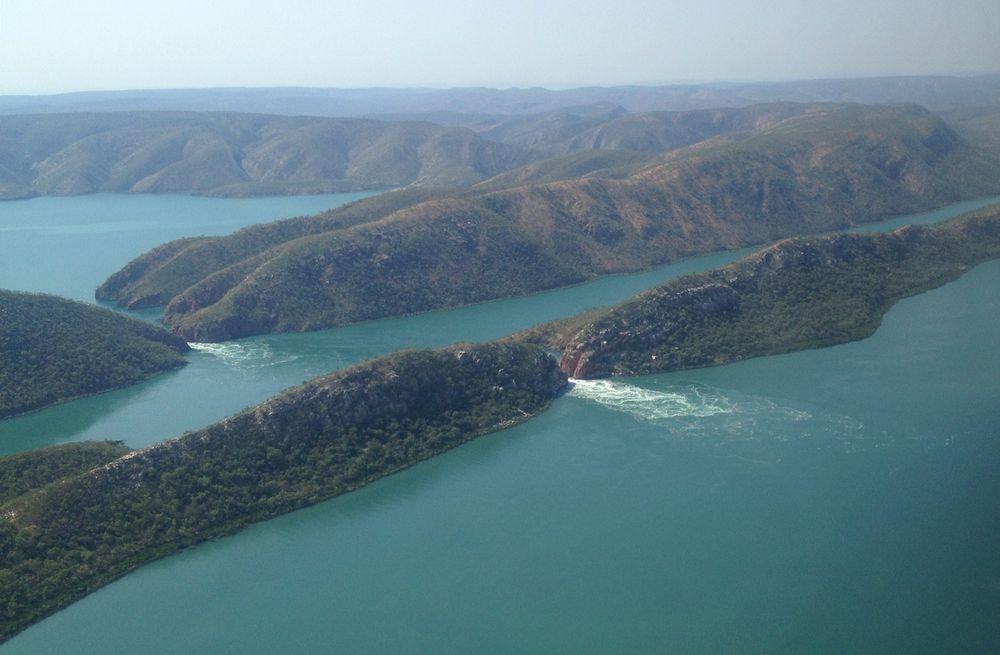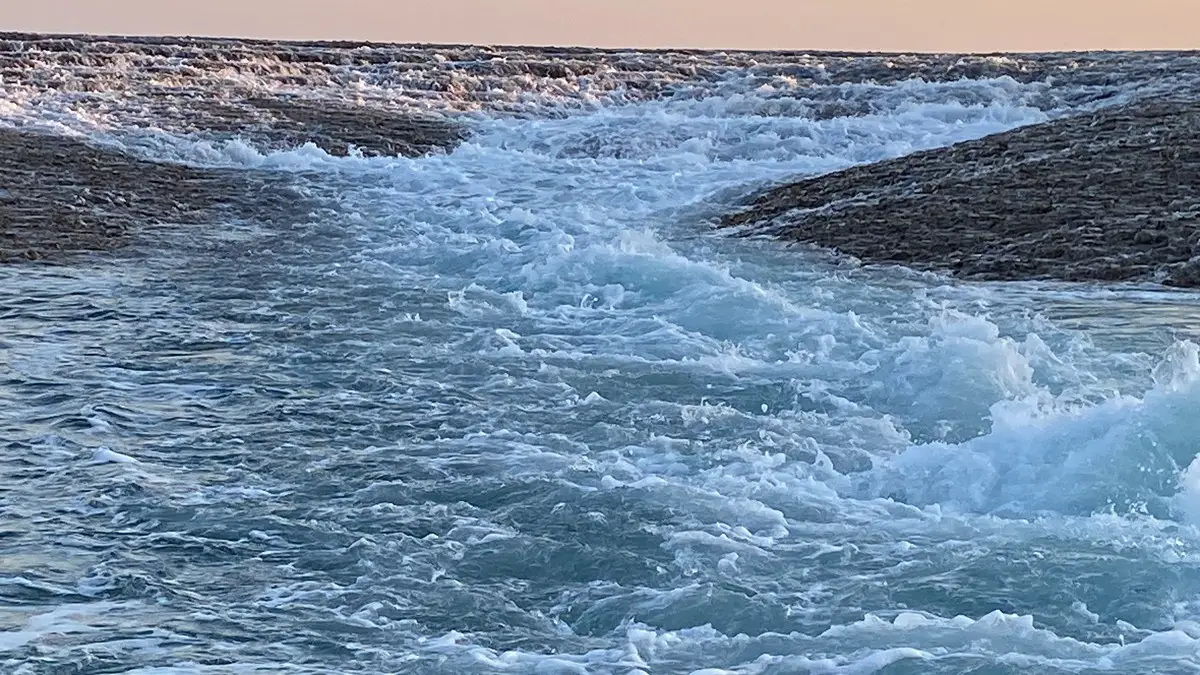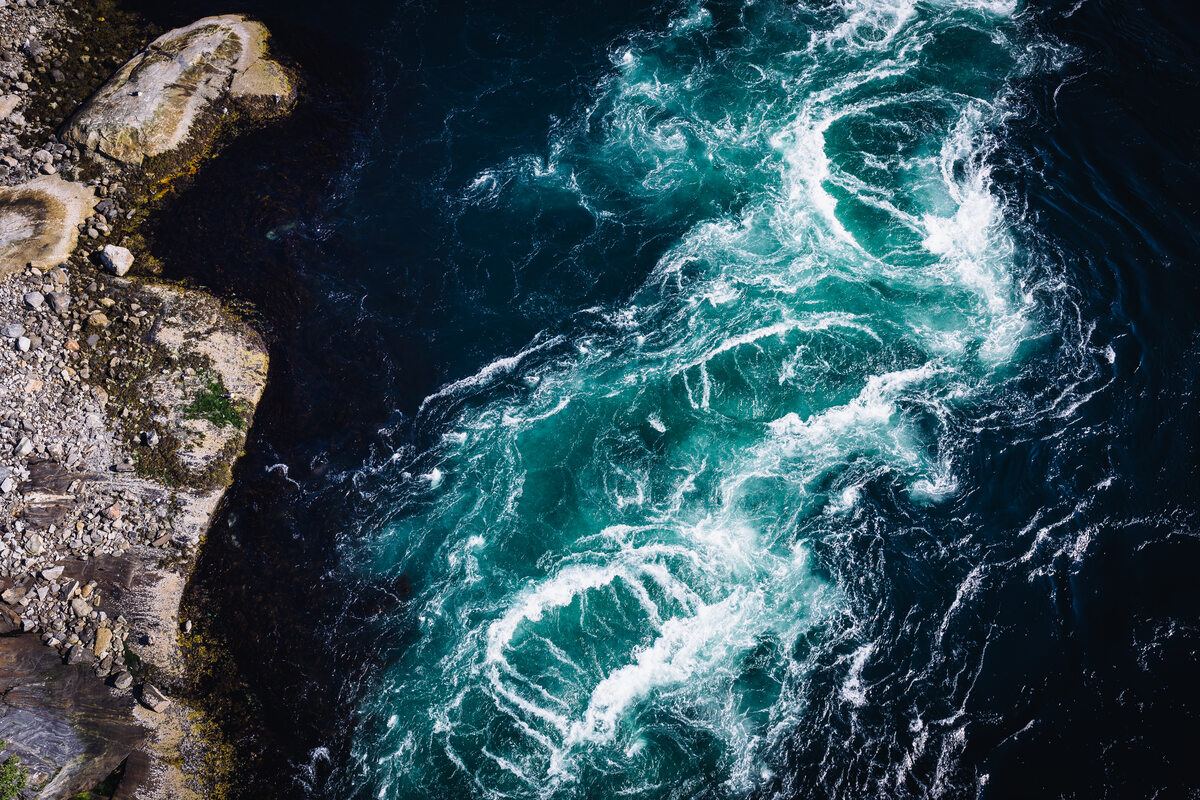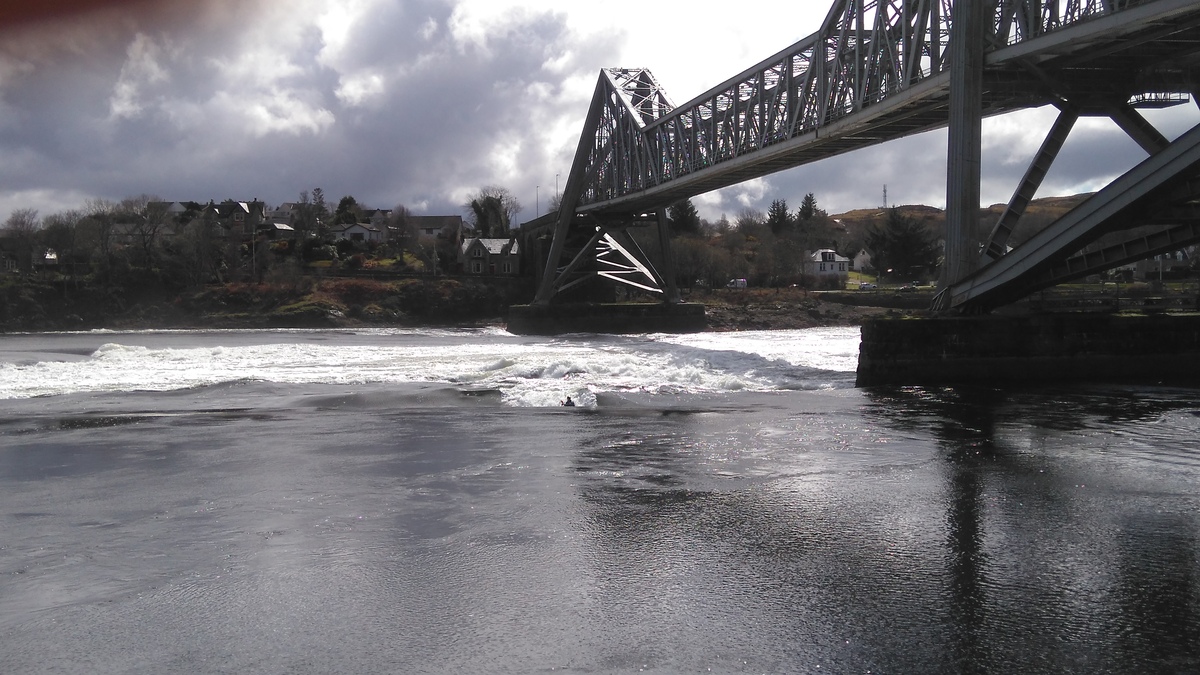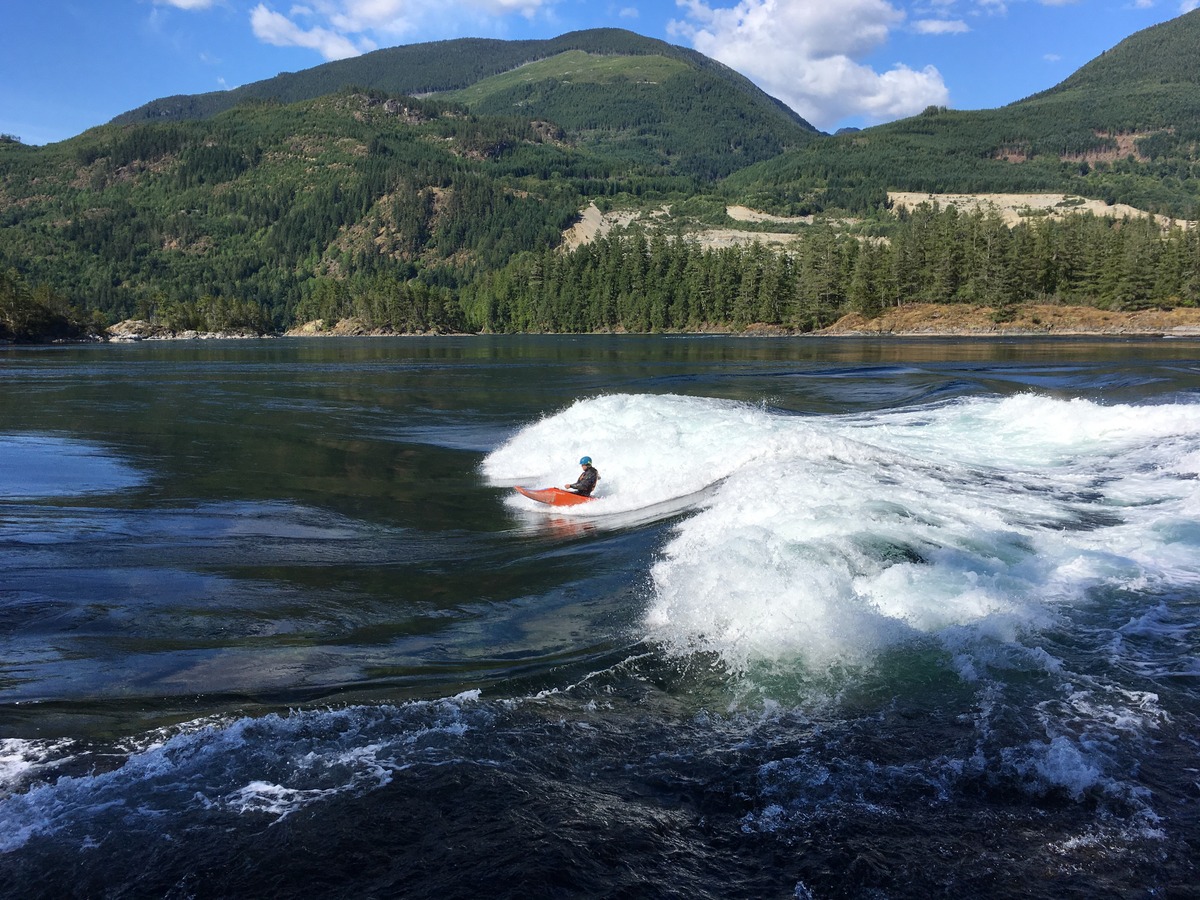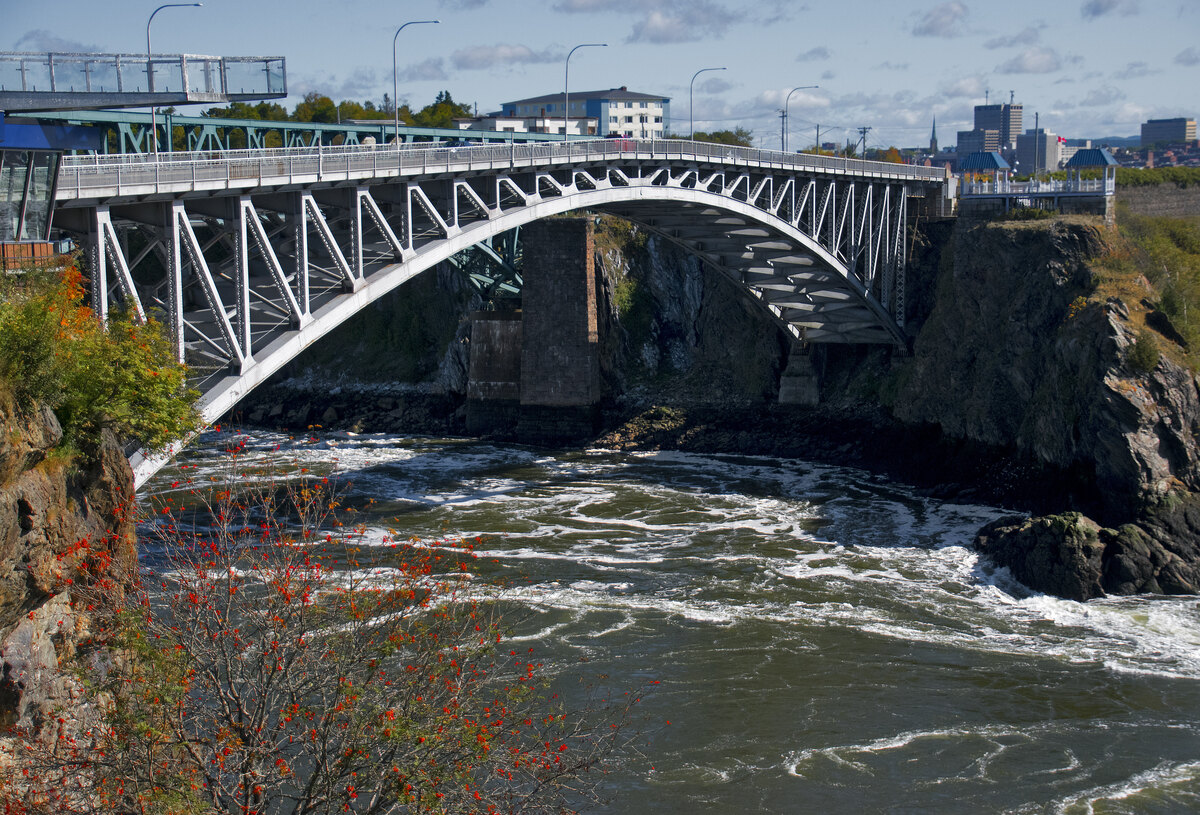Wondermondo 🢖 Categories of wonders 🢖 Geological wonders 🢖 Tidal currents and whirlpools
Category
Tidal currents and whirlpools
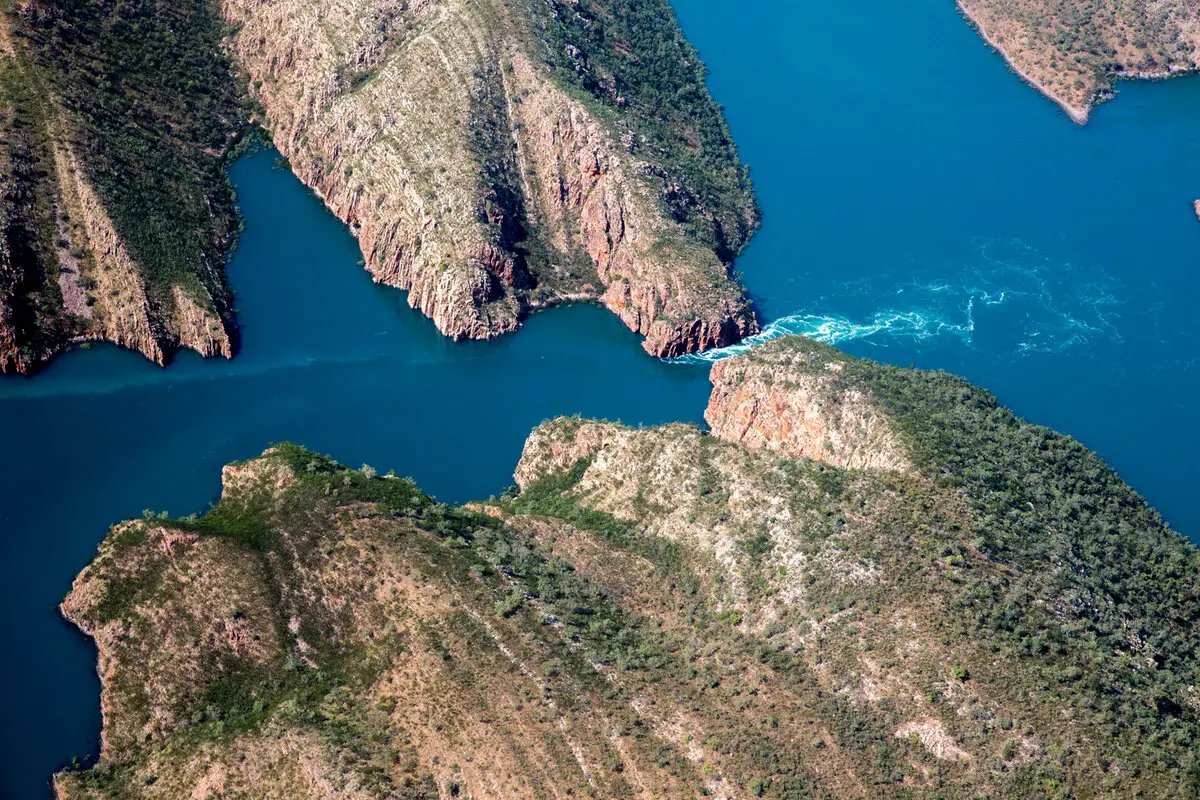
 Described tidal currents and whirlpools
Described tidal currents and whirlpools
If you see this after your page is loaded completely, leafletJS files are missing.
 What is included in this category?
What is included in this category?
This category includes somewhat lesser-known natural wonders: locations where large masses of water move on a regular basis due to tidal forces.
The height of tides around the world’s oceans is very diverse. In many locations, tides are almost nonexistent, but in some places, the daily changes in ocean levels are very impressive.
The highest tides in the world occur in two locations on the eastern coast of Canada: the Bay of Fundy (with fluctuations of 16.4 meters) and the southwestern part of Ungava Bay (16.2 meters). The phenomenon of Ungava Bay is lesser-known; it is a remote, sparsely inhabited area where the sea remains frozen for most of the year.
These differences in water level mean that there is a huge mass of water moving back and forth almost every day. In several locations around the world, these movements create a fascinating natural spectacle. There are two main types of such natural landmarks:
- Tidal falls and squeezes: These are locations where masses of rising (or falling) seawater squeeze through cliffs. The most impressive examples include the Horizontal Falls in Western Australia and Saltstraumen in Norway. Sometimes, in these squeezes, impressive whirlpools form (e.g., Moskstraumen in Norway and Naruto whirlpools in Japan).
- Tidal bores: These are tidal waves that move against the currents of large rivers and, occasionally, narrow bays. One of the most impressive examples is the Qiantang River Tidal Bore in China, which can reach up to 9 meters in height. However, there are quite a few rivers around the world with similar phenomena.
 Top 20 tidal currents and whirlpools
Top 20 tidal currents and whirlpools
Asia
Qiantang River Tidal Bore, Daquekou
China, Zhejiang
The most impressive tidal bore – a tidal wave in the river. Here the wave is up to 9 m high and its speed reaches 40 km/h. This natural phenomenon has been known since ancient times and there is a history of surfing it in antiquity.
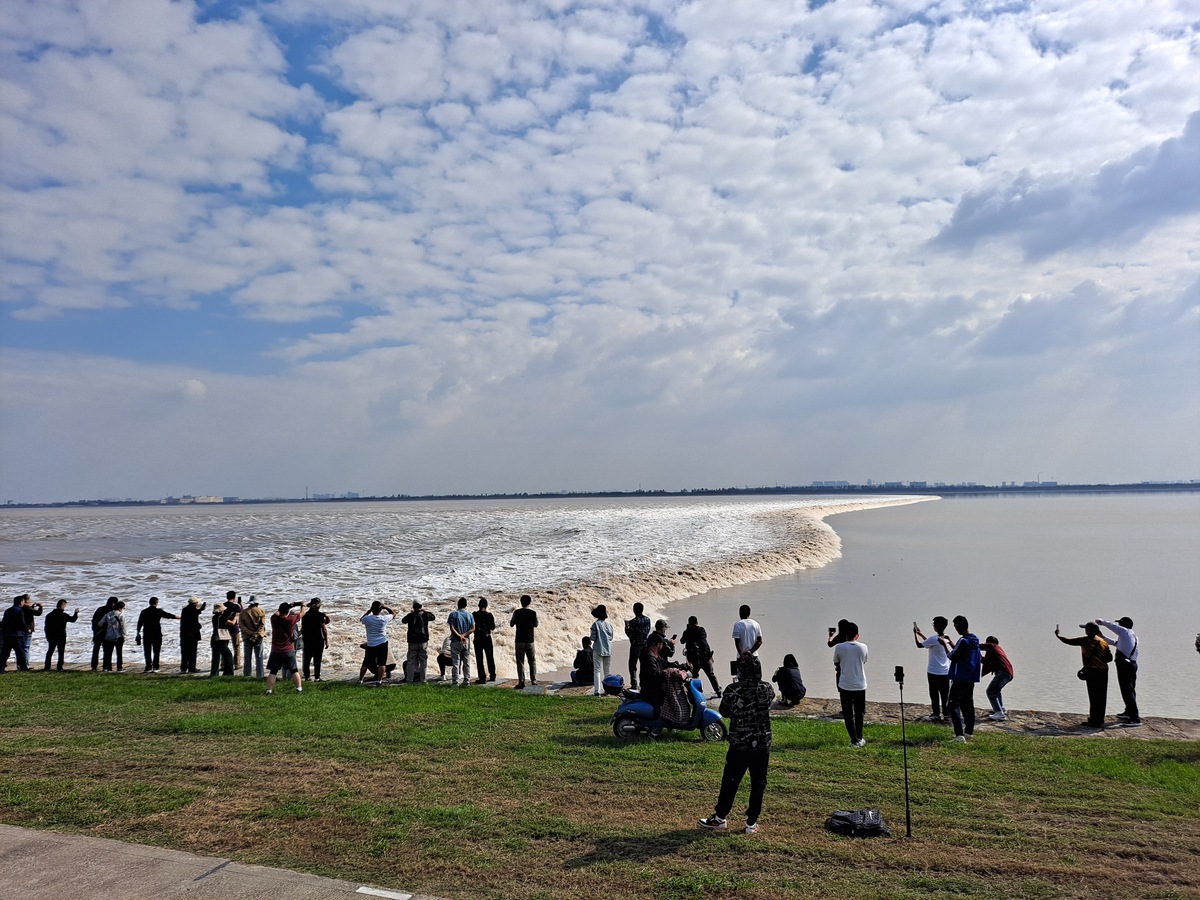
Bono, Kampar River
Indonesia, Sumatra
A unique natural spectacle – tidal bores. On the enormous Kampar River, the tides create impressive, roaring waves that are up to 5-6 m high. These waves travel some 40 km per hour. At certain times of the year, these waves create so-called “Seven Ghosts” – they are divided by crosswaves into several symmetrical sections that are especially high and dangerous.
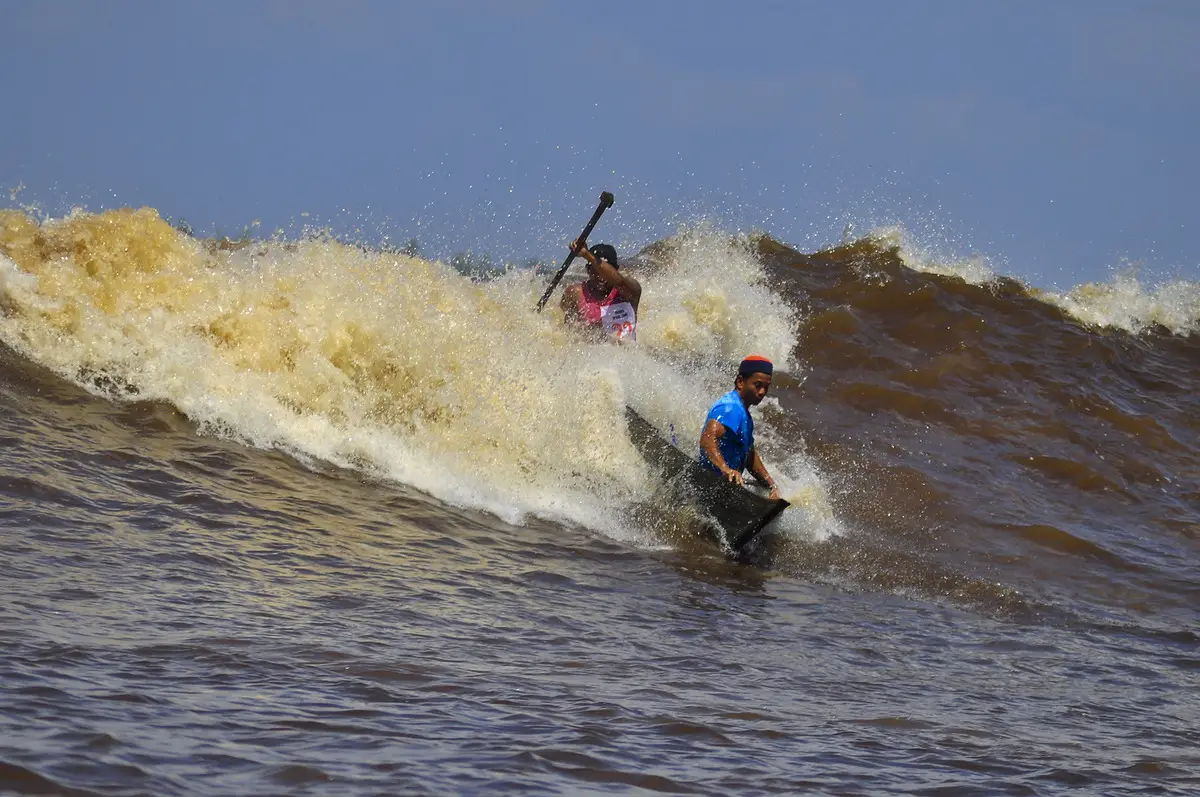
Naruto whirlpools
Japan, Kansai
These are very impressive whirlpools formed by the tide in the 1.3 km wide Naruto Strait. Vortices are up to 20 m in diameter, the speed of the water – up to 20 km/h.

Sri Aman Tidal Bore
Malaysia, Sarawak
The most regular tidal bore in the world. On the Batang Lupar River, tides form some 2-3 meters high waves daily. At certain times of the year, this tidal wave is especially impressive.
Australia and Oceania
Horizontal Falls
Australia, Western Australia
Sea currents through two narrow chasms (12 and 20 m) that are caused by tides. Tides there are 10 m high thus several times during the day there is seen an impressive sight.
Montgomery Reef tidal falls
Australia, Western Australia
When the tide is low and a huge amount of water leaves the lagoon of this coral reef, hundreds of waterfalls appear around it. These falls can be up to 4 m tall. The height of the tides is up to 11 m.
Te Aumiti (French Pass)
New Zealand, Marlborough
Narrow, 500 m wide straits with impressive tidal flows where the speed of the water reaches 4 meters per second and kills the fish. The extreme force of water has created more than 89 m deep depressions near the straits with powerful vertical streams. In these straits lived a famous dolphin – Pelorus Jack – who in 1888 – 1912 joined every boat that was passing through the straits.
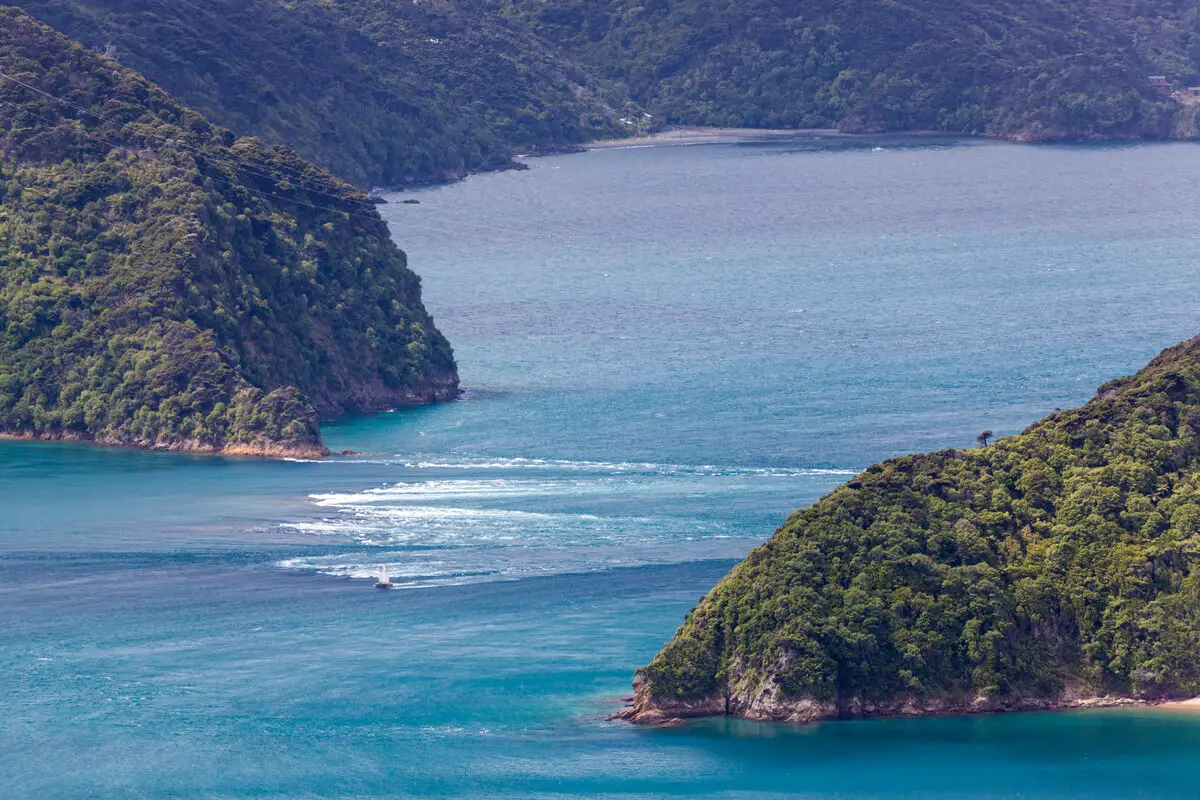
Europe
Saltstraumen
Norway
A strait with the most powerful tidal currents in the world, where 400 million m³ of water are forced through a 150 m wide strait every six hours, speed of water reaches 40 km/h. In the process form up to 5 m deep funnels of whirlpools.
Moskstraumen (Moskenstraumen)
Norway
The most legendary and most powerful oceanic whirlpool – in written stories named Maelstrom. This is a powerful maelstrom between two Lofoten islands – tidal forces there form powerful whirlpools and tidal eddies. Contrary to many whirlpools, this one is located in the open sea, some distance away from the land. The largest whirlpool is some 40-50 m wide, with up to 1 m high ripples. Legendary site.
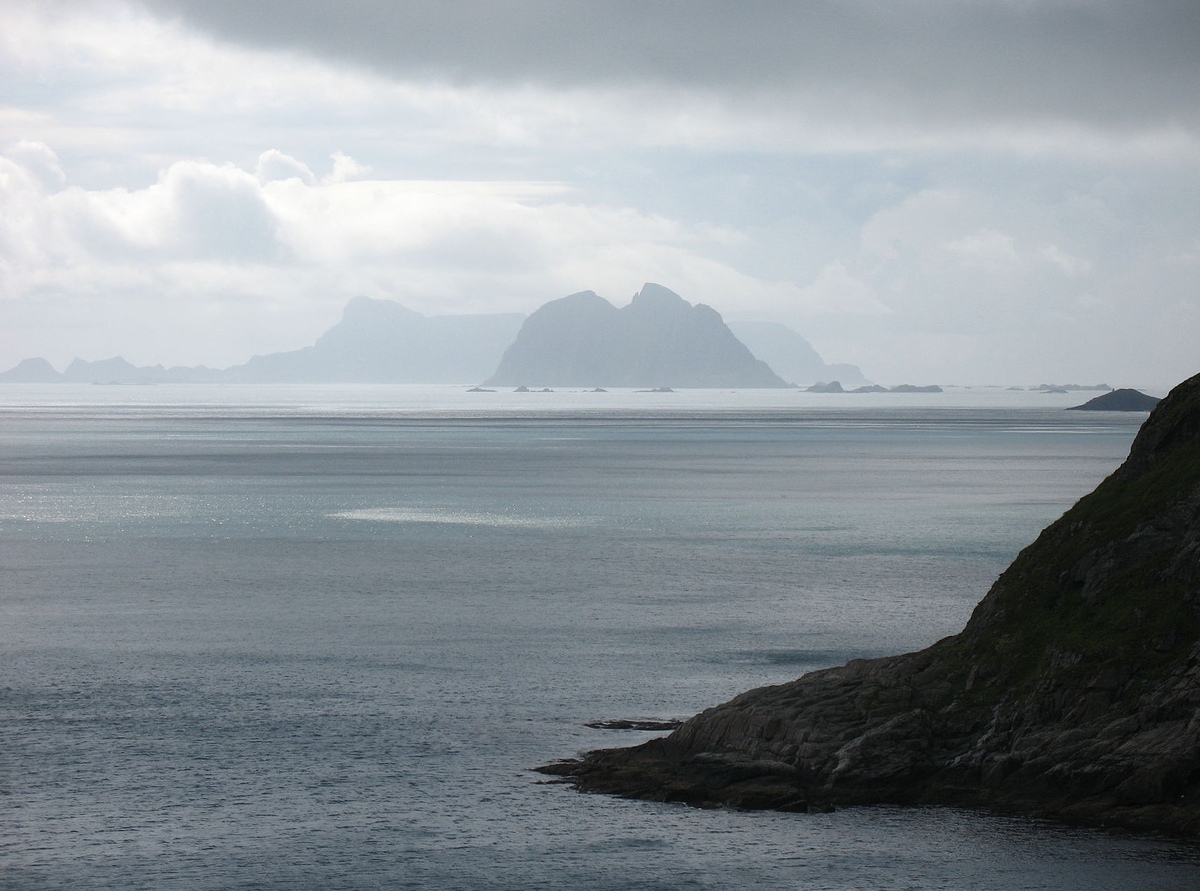
Corryvreckan whirlpool
United Kingdom, Scotland, Argyll and Bute
Whirlpool and standing waves, created by tidal currents in Corryvreckan straits between Jura and Scarba islands. The speed of the current reaches 16 km/h. This rises waves up to 9 m high and the roar of whirlpool is heard even 16 km far away.
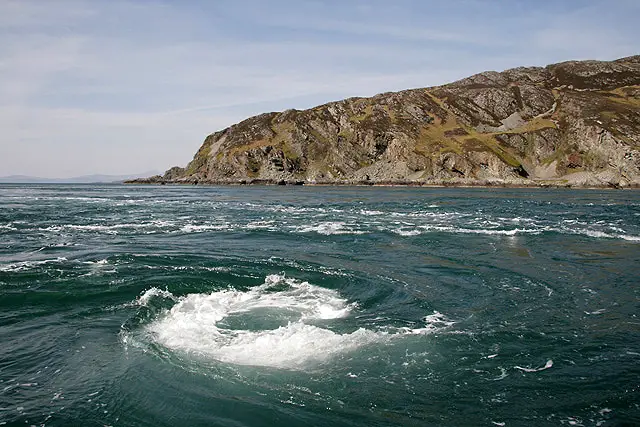
Falls of Lora
United Kingdom, Scotland, Argyll and Bute
An impressive tidal race that has formed on the mouth of Loch Etive. These tides are especially impressive during some two – five days during the spring tides when loud, impressive white water rapids form. A popular location for white water kayakers.
North America
Skookumchuck Rapids (Skookumchuck Narrows)
Canada, British Columbia
Powerful marine rapids at the entrance of Sechelt Inlet. During the up to 3 m high tides, the difference in seawater level can exceed 2 meters and the seawater here flows with a speed up to 33 km/h.
Kangiqtualujjuaq Reversing Falls (Barrier Inlet Reversing Falls)
Canada, Nunavut
Powerful reversing falls at the entrance in Kangiqtualujjuaq – a more than 20 km long fjord. There the fjord is almost closed by several small islands and at low tide forms a powerful, up to 3 m high waterfall, but at high tide – roaring flow of giant amounts of water inland and dangerous whirlpools.
Wager Bay Reversing Falls
Canada, Nunavut
An impressive tidal waterfall and whirlpools form on the approximately 180 m wide straits between Wager Bay and Ford Lake.
Sullivan Falls, Mt. Desert Narrows
United States, Maine
Impressive tidal falls – rapids. During the tides, the approximately 160 m wide straits form a powerful stream with high-standing waves and whirlpools. As the tides change, the direction of this flow is reversing.
Old Sow whirlpool
Canada, New Brunswick
The most impressive tidal whirlpool in the Western Hemisphere. The tides there are 6.1 m high and the power of water creates some 76 m wide whirlpool. The power of the whirlpool is dangerous for smaller boats. In this area are observed also standing waves, extremely powerful upwellings and unusual depressions in the water.
Cape Split tidal flow
Canada, Nova Scotia
The 5-kilometre wide narrows between Cape Split and Cape Sharp at mid-tide have a very powerful flow that is similar to the flow of all the world’s rivers together. Every hour at this time there flow 4 cubic kilometres of water. Tides form large waves and the level of water in Minas Basin changes for up to 16 meters.
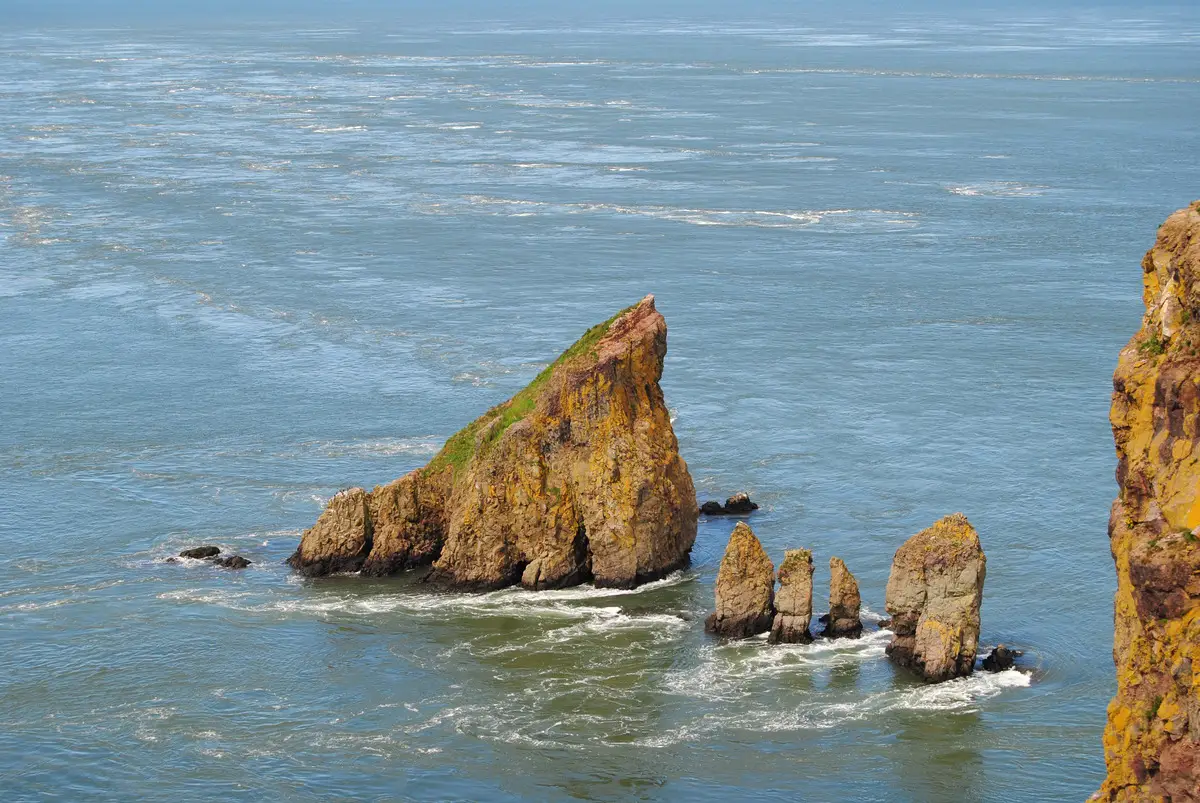
Dory Rips
Canada, Nova Scotia
Location with an unusual wave action. There, at the headland of Cape d’Or, meet three tidal currents, causing a chaotic agitation on the surface of the water. Dory Rips form at the entrance of the Minas Basin – the location with the highest tides in the world.
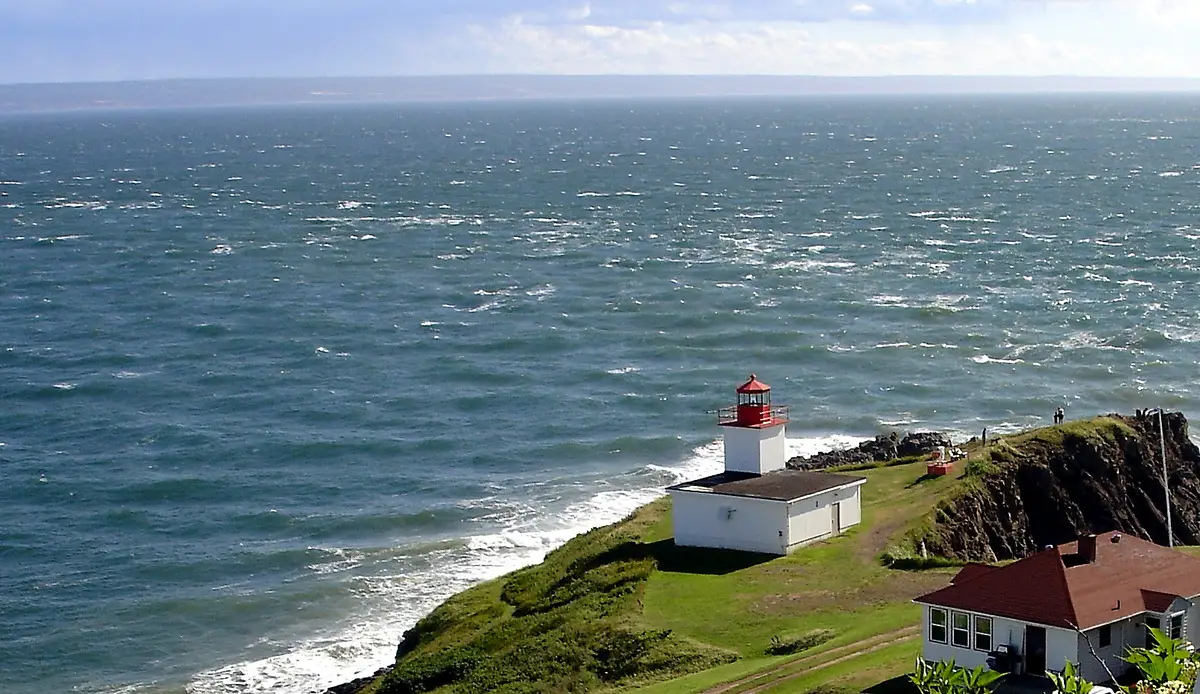
Reversing Falls on Saint John River
Canada, New Brunswick
The river in this location flows through a narrow gorge in the Bay of Fundy. The Bay of Fundy has some of the highest tides in the world and this causes unusual phenomenon – during the high tide water flows inland through the rapids, and at low tide, it flows back to the sea.
Cobscook Falls, Pembroke Reversing Falls
United States, Maine
The most impressive tidal falls – reversing falls – in Maine. The extreme height of tides (more than 7 m) creates impressive tidal falls that change their direction as the tides change.

